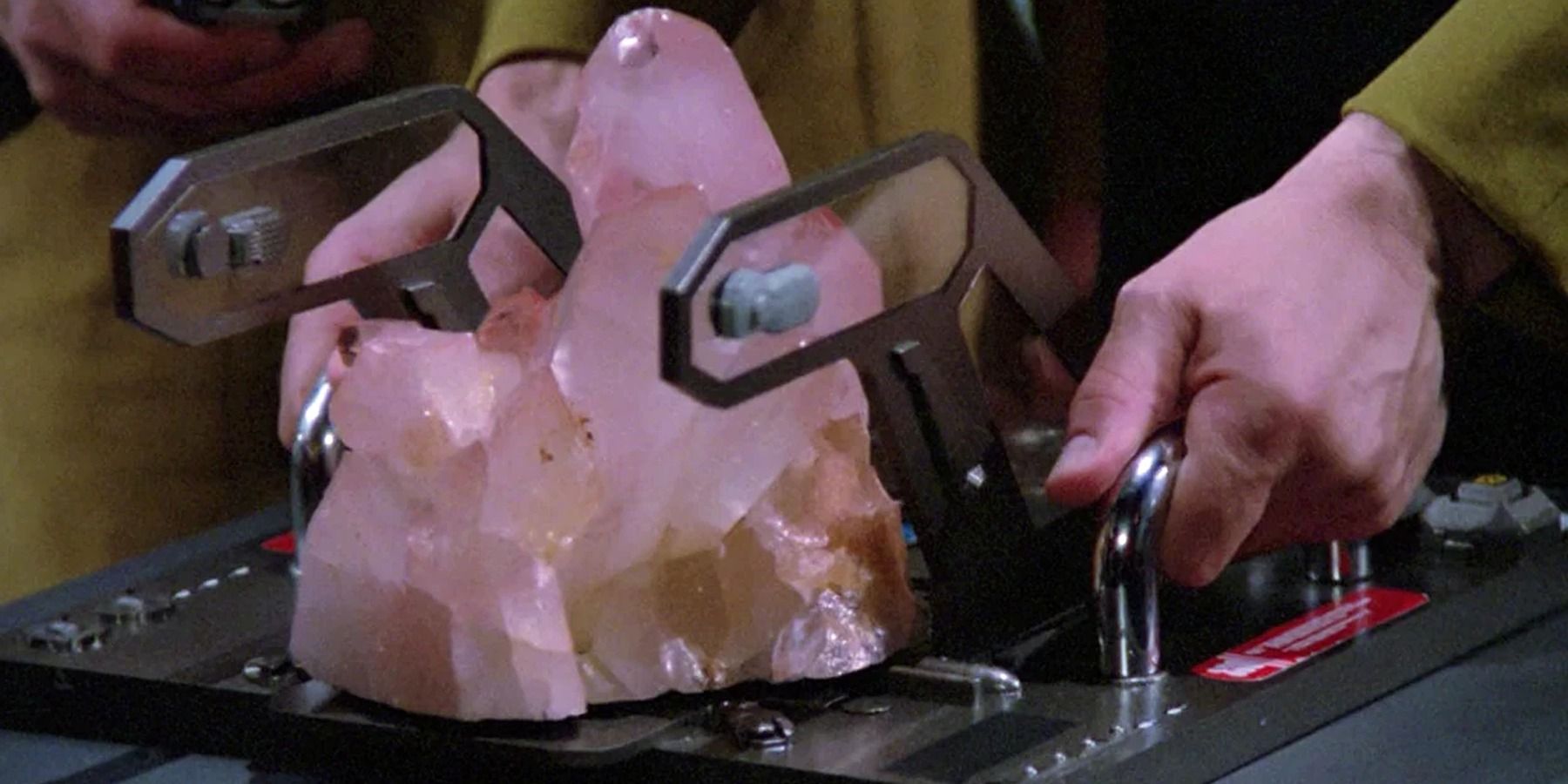Highlights
- Dilithium is a crucial component of the warp drive in the Star Trek universe, allowing ships to surpass the limits of space-time. It plays a central role in the series' plotlines and has contributed to the evolution of intergalactic civilization.
- In Star Trek, dilithium is a rare and valuable resource, with mining operations causing ecological damage. The demand for dilithium has led to interstellar diplomacy and conflicts, emphasizing its strategic importance.
- While dilithium's properties and scarcity are fictional, its concept has inspired real-world scientists to explore new materials and energy sources that could revolutionize space exploration in the future.
Star Trek has fascinated fans for decades with its groundbreaking technologies, interstellar exploration, and intriguing storylines. Within this beloved series, a crystalline substance called dilithium plays a pivotal role. In fact, it is essential to the Gene Roddenberry universe.
Dilithium exists in Star Trek as a member of the hypersonic series. It is a material primarily found in crystalline mineral form. Thanks to its unique properties, it is an indispensable component of the warp drive, the mechanism that enables ships to surpass the constraints of conventional space-time limitations. Throughout Star Trek series and films, dilithium has been central to several plot lines. Since the founding of the Federation, it has played a crucial role in the evolution of intergalactic civilization.

Star Trek: How Was Warp Achieved When Dilithium Is Not Found On Earth?
Does the storyline of Star Trek: Discovery bring into question the founding father of space travel methods?
Background & History
In the Star Trek universe, dilithium is a naturally occurring crystal-like mineral that has proven to be a precious and rare resource. In the original series, dilithium crystals were described as invaluable, as it was impossible to replicate them. This rarity led to recurring plots involving the search for these crystals, similar to the real-world quest for resources like oil. Local names for dilithium, such as "radan" and "winter's tear," added to the sense of mystery surrounding this substance.
The demand for dilithium increased as the Federation grew. Extensive mining operations led to significant ecological damage on the planets where it was found. This concern became a crucial element in the Star Trek storyline. In Discovery, characters like Paul Stamets hoped to find alternative, sustainable power sources to prevent further ecological harm.
Dilithium's value often extended to interstellar diplomacy and conflicts. The Federation attempted to negotiate with the Halkans to mine dilithium from their planet in the year 2267. Meanwhile, the mirror universe showed the Halkans refusing a similar demand with high stakes. In another instance, Captain James T. Kirk offered dilithium in exchange for a life-saving substance, emphasizing the strategic importance of this resource.
One of the most significant events in Star Trek was "The Burn," which occurred in the 31st century. This cataclysmic event was central to the plot of the third season of Discovery. The Burn was triggered by a sudden loss of power in refined dilithium, leading to catastrophic warp core failures across the galaxy. This resulted in the near-collapse of the Federation and a scramble for unrefined dilithium.
In 3189, the USS Discovery discovered a planet composed of dilithium, an incredible find in the post-Burn galaxy. This brought hope to the Federation by providing a means to distribute dilithium to various star systems across the galaxy.
Uses of Dilithium in Star Trek
Dilithium's fictional properties make it ideal for regulating the annihilation reaction between matter and antimatter in a starship's warp core. It induces eddy currents in the dilithium crystal structure when subjected to a high-frequency electromagnetic field. This prevents charged particles from coming into contact with antimatter.
As depicted on the show, the streams of matter and antimatter directed into crystallized dilithium are usually unbalanced, with an excess of matter. The annihilation reaction heats the excess matter, producing plasma for the nacelles and enabling faster-than-light travel. During this reaction, dilithium is crucial in preventing antimatter explosions.
The scarcity of natural dilithium crystals has been a recurring theme in Star Trek storylines, often leading to interstellar conflicts. The need for these crystals for interstellar travel is a parallel to the real-world resource of oil. Just as the real world has seen conflicts over oil, dilithium been a catalyst for conflict in the Star Trek series.
Dilithium in Real-World Science
In the real world, dilithium is a diatomic molecule composed of two lithium atoms covalently bonded together. It exists primarily as a gas with specific properties such as bond order, internuclear separation, and bond energy. However, real-world science makes it clear that the creation of a warp drive powered by dilithium crystals is highly unlikely.
Prominent physicist Lawrence M. Krauss, in his book The Physics of Star Trek, suggests that warp drive is as improbable as time travel. He cites the paradoxes involved in round-trip time travel as evidence against the possibility. “There is reason for hope, but I must admit I remain skeptical,” the scientist wrote.
Like my colleague Stephen Hawking, I believe that the paradoxes involved in round-trip time travel rule it out for any sensible physical theory. Since virtually the same conditions of energy and matter are required for warp travel and deflector shields, I’m not anticipating them either.
Interestingly, within the confines of the Star Trek universe, the replication of dilithium remains an unattainable feat, despite the replication of most other forms of matter. Speculation in this Reddit thread offers an explanation for this phenomenon, suggesting that the structure of dilithium crystals might resemble Widmanstätten patterns. These distinctive crosshatch patterns are known to emerge on the surface of specific objects, such as meteorites, but only when subjected to an exceptionally slow cooling process. This intricate natural process appears beyond the capabilities of laboratory settings. This might explain why the replication of dilithium defies even the most advanced sci-fi technologies.
In contemporary physics, the notion of crystalline structures influencing energy manipulation and propulsion mechanisms echoes the fictional applications of dilithium in Star Trek. The real-world scientific community has not discovered an exact counterpart to dilithium. However, the concept has inspired researchers and enthusiasts to explore new materials and energy sources that could potentially revolutionize space exploration in the future.






